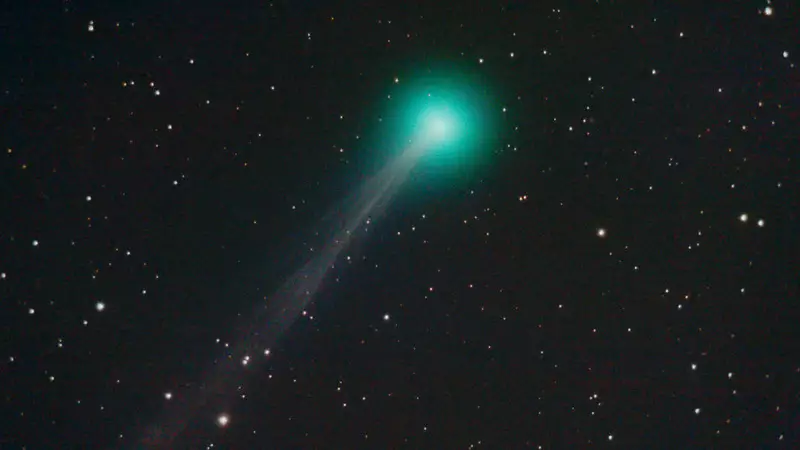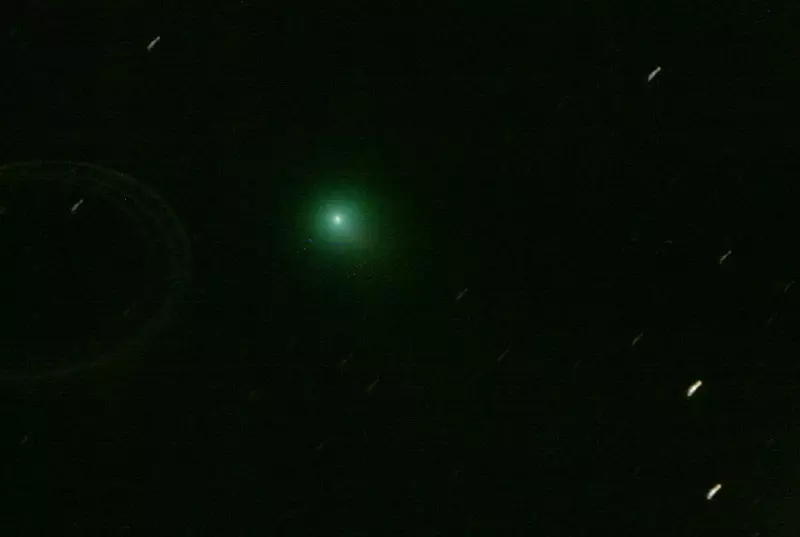
Comet Swan will be visible in UK skies from tonight, with astronomers saying people might even be able to see it with the naked eye.
The comet was discovered last month by an amateur astronomer from Australia Michael Mattiazzo, who was inspecting images that had been posted online from the Solar Wind Anisotropies (SWAN) instrument aboard SOHO, the ESA/NASA Solar and Heliospheric Observatory.
The icy space rock, which has an official name of C/2020 F8, glows with a green-tinged light of ionised gas.
Advert
The comet will be gracing the UK's skies during May and into June, having come closest to Earth on 13 May, before continuing to move closer to the Sun on 27 May - getting brighter in the process.
A post on the European Space Agency website says: "It can be extremely difficult to predict the behaviour of comets that make such close approaches to the Sun, but scientists are hopeful that Comet SWAN will remain bright enough to see as it continues its journey.
"If the comet survives, star gazers on Earth should look for it near the bright star Capella in the constellation of Auriga, the Charioteer.
Advert
"This is almost certainly the only time the comet will be visible in our lifetimes: estimates are not yet fully precise, but it is clear that the comet's orbital period is measured in thousands or even millions of years."
It will be easier to see in the southern hemisphere - thanks to the Sun being further below the horizon - but if you're in the northern hemisphere you may just have to look for the comet earlier in the night and at lower altitude.
The comet will also become brighter towards the end of the month as it moves closer to the Sun.
Advert
The BBC's Sky at Night magazine explains: "Observing it will be a balancing act due to where the comet is located in the sky versus the onset of evening, morning and summer twilight.
"Its track from the start of May has it passing through western Cetus, crossing Pisces and then moving into Triangulum on the morning of 15 May. It leaves Triangulum on 18 May, crossing into Perseus.
"It'll be very close to Algol (Beta Persei) on the nights of 19/20 and 20/21 May. If you're familiar with Algol, this will help locating the comet on these nights. As luck would have it, the comet is expected to reach its peak brightness between 20-22 May."
While the comet may be visible to the naked eye, according to amateur astronomer David Blanchflower, your best chances of seeing it will be through a pair of binoculars or a small telescope.
Advert
Explaining how the comet will look like a small, fuzzy source of light with a possible faint trail behind it, Blanchflower told the Daily Express: "From the UK it will be low on the eastern horizon before sunrise. Won't be easy to spot.
"Binoculars rather than naked eye would give someone the best chance of seeing it.
"Into next month it will have a better elevation but not predicted to be very bright so again binoculars or a small telescope would be needed.
"They are easier to handle and should give a nice view of the comet's 'smudge' appearance."
Featured Image Credit: Christian Gloor/FlickrTopics: Science, World News, News, space
